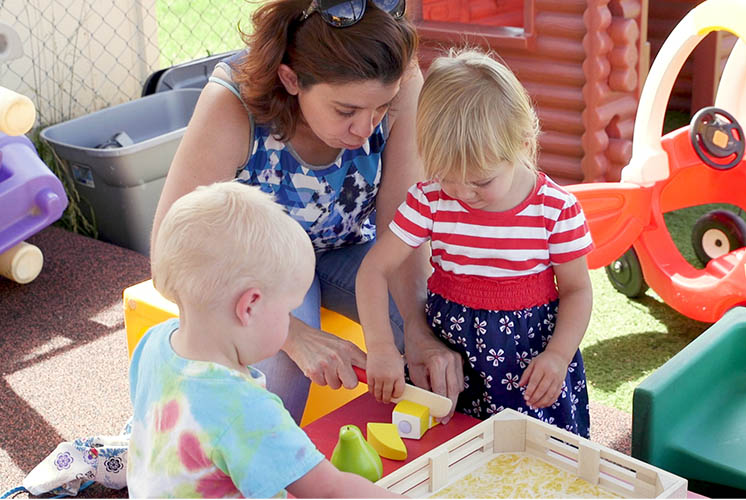Before From Neurons to Neighborhoods was published, Zero to Three published a series of papers that similarly pointed to the social and emotional development of infants and toddlers as the precursors to success in school. The authors identified seven characteristics of children who are best prepared to thrive in the school environment (Zero to Three, 1992). These characteristics are mirrored in the Head Start Early Learning Outcomes Framework (ELOF) domains Approaches to Learning; Social and Emotional Development; and Language and Communication, under Language and Literacy (Office of Head Start 2015):
- Confidence — A sense of control and mastery of one’s body, behavior, and world; the child’s sense that he or she is more likely than not to succeed at what he or she undertakes and that adults will be helpful
- Curiosity — The sense that finding out about things is positive and leads to pleasure
- Intentionality — The desire and capacity to have an effect and to act on that desire with persistence; a characteristic that is clearly related to a sense of competence and of being effective
- Self-Control — The ability to modulate and control one’s own actions in age-appropriate ways; a sense of inner control
- Relatedness — The ability to engage with others based on the sense of being understood by others, and understanding others
- Capacity to communicate — The desire and ability to exchange ideas, feelings, and concepts with others.A characteristic that is related to a sense of trust in others and a sense of pleasure in engaging with others, including adults
- Cooperativeness — The ability to balance one’s own needs with those of others in a group activity
 Characteristics such as these enable children to respond to direction, pay attention, communicate effectively with peers and adults, cope with stress, and feel motivated to learn. Children who are lacking these qualities face much greater challenges and typically experience both behavioral and academic problems. These children are at a greater risk to disrupt the classroom environment; be excluded by their peers; be suspended or expelled; fall behind in academic skills; and eventually experience greater behavioral and learning problems that lead to academic failure and school drop-out (Peth-Pierce, 2000; U.S. Department of Health and Human Services and U.S. Department of Education, 2016).
Characteristics such as these enable children to respond to direction, pay attention, communicate effectively with peers and adults, cope with stress, and feel motivated to learn. Children who are lacking these qualities face much greater challenges and typically experience both behavioral and academic problems. These children are at a greater risk to disrupt the classroom environment; be excluded by their peers; be suspended or expelled; fall behind in academic skills; and eventually experience greater behavioral and learning problems that lead to academic failure and school drop-out (Peth-Pierce, 2000; U.S. Department of Health and Human Services and U.S. Department of Education, 2016).
There is strong support for the idea that school readiness is best considered in the context of fostering all children’s overall developmental competence so that they can manage the demands and responsibilities of school and life. Developmental competence refers to optimal functioning in all areas of development, and is expressed as:
- Curiosity and the motivation to learn
- The resilience to cope with stress
- The ability to solve problems, communicate effectively, and develop close, satisfying relationships with peers and adults
This developmental competence is the result of positive, early nurturing experiences with sensitive, responsive adults and is as important as acquiring specific academic skills. These nurturing experiences are what teach children to manage their emotions and behavior, effectively communicate and learn, and sustain positive relationships with others (Institute of Medicine, 2000).
Read more:
Resource Type: Article
National Centers: Early Childhood Development, Teaching and Learning
Last Updated: December 5, 2019
